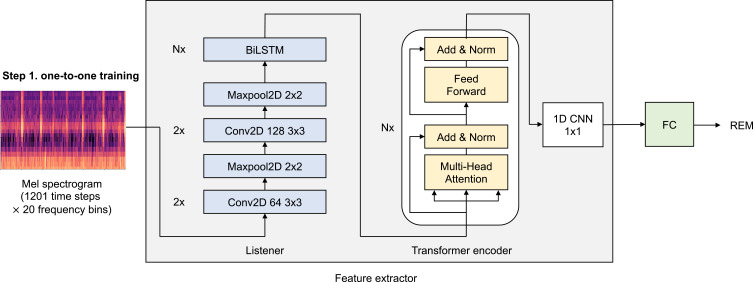Figure 3.
The details of first step of SoundSleepNet—pretraining (one-to-one training). The first step of SoundSleepNet focuses on training the feature extractor to detect the meaningful features related to sleep staging from a single Mel spectrogram. Feature extractor is composed of Listener and Transformer encoder. Listener network is a stack of multiple CNNs commonly used to deal with image data (Mel Spectrograms in our case), followed by N layers of bidirectional Long Short-Term Memory (LSTM) to capture the temporal correlation of CNN outputs. Transformer encoder network composed of N layers of an encoder block, which has one multi-head attention and one feed forward network. The attention and feedforward network are each followed by an addition and normalization layer. In our experiments, N was set to be 2 for all Listener and Transformer encoder blocks. At the end, the fully connected layers (FC) classify sleep stages for each input epoch, which feedbacks the training of feature extractor.
Abbreviation: CNN, convolutional neural networks.

